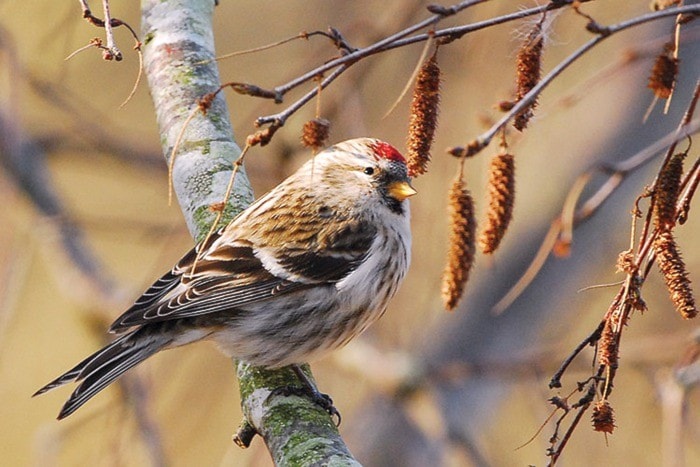Last year proved to be a very busy, rewarding and interesting year at the Mountainaire Avian Rescue Society (MARS).
During the year there were over 1,800 wildlife admissions, this number included 1,337 Vaux’s swifts that were D.O.A. but each was recorded as an admission to meet our permit requirements. Actual admissions were 491 which is an average year for MARS.
Our bald eagle population seems to be holding steady and we had 47 admissions and saw many that were emaciated. It seemed we had more long term patients that needed specialized care and critical care and during the winter we were working at full capacity.
We also saw an increase in unusual species such as a brown pelican, osprey, an endangered marbled murrelet and a pigeon guillemot which require special needs particularly food that often is not readily available.
Eight species of owls were admitted from a variety of habitats. The majority of their injuries were from impacts with vehicles. Most of the owls sustained fractures to wings or head and eye injuries. The smaller owls arriving at the center also suffered from emaciation and a variety of other injuries, but they are also most vulnerable to habitat loss as they require dead tree cavities for nesting. Many of these trees were felled by the numerous wind storms that swept through our local areas.
Oscar the snowy owl, another baby boomer, has been at MARS for almost two months and is in his final stamina training before release. Last summer our ambassador owl Otus was sent to Prince George to another wildlife center where he is hopefully taking part in a breeding program. So far he has been introduced to a potential mate but only time will tell if they will successfully breed. He was a great loss to my educational program.
Last year also appeared to be an “irruptive year” for many wildlife species, especially birds. This results in a “baby boom” when food is plentiful and more young are produced which in turn results in a population increase that forces the juveniles away from their normal territory to find their own food.
The climate changes seem to be not only altering wildlife habitats, but the habits of these species. Birds seem especially vulnerable.
I spent time with family over the holidays in Furry Creek near Squamish and was delighted to have encountered a bird I had not seen before. Although this birds name is the “common redpoll” it is far from common in this area. Last year’s baby boom created an irruptive year for the little birds that came visiting in the back yard.
My eye was drawn to a tight knit flock of little birds that were in perpetual motion landing in a stand of birch trees. I grabbed a camera and tried to capture one that was stationary standing or hanging upside down gleaning bark or seeds from the trees. I gave up trying to capture them on camera and switched to binoculars as an attempt to identify them. I knew they were finches from their beaks but not a common visitor.
Once home surrounded by bird books, I identified them as common redpolls, a non-native species of southwestern British Columbia. Normal habitat for these little birds is the northern latitudes in North America to Europe and Russia. They winter in Alaska and northern B.C. and move into the high arctic to breed and raise their young.
The common redpolls are small birds, five inches long and weigh approximately 14 grams. Their coloration is very unique. The males had red head caps with rosy chests and a white belly with dark streaking on their wings. The females also had a rosy cap, white bellies and heavily streaked wings. Both had a deeply notched tail with rounded tips to the feathers.
One wonders how such tiny birds can survive in such a harsh, unforgiving climate. Winter can last for up to six months, which means months of darkness and limited food.
Common redpolls can survive in temperatures of -67 degrees Celsius. They have managed to adapt to their environment with some special anatomical features. They are equipped with a special “esophageal diverticulum” (or expandable throat pouch) that allows them to store food for consumption at a later date, unlike grey jays that hide the food in trees and other places.
Knocking seeds from the trees on to the ground, they gather up the food then find a sheltered spot to hunker down from the storms eating some seed then, regurgitating others as needed. Seeds include those from birch, larch, alders and pines and they supplement this with insects especially in the spring and summer. Another survival adaptation is the ability to fluff up their contour feathers trapping layers of warm air between their feathers to insulate their bodies. They have also been known to burrow into the snow to escape the cold.
During extreme winter conditions some conifer trees do not produce cones and the birds and squirrels that rely on this food source have to forage outside their usual territory. I feel very fortunate to have seen these cool little birds as during my research into their habits, I found there is very little documentation about them.
Bird watching can be very therapeutic and addictive as well as fascinating and rewarding. I am sure that we will continue to see many more unusual species in places they have rarely been seen before.
To report injured wildlife please call 1-800-304-9968, call before attempting a rescue. For more information on MARS please visit our web site at www.wingtips.org.
